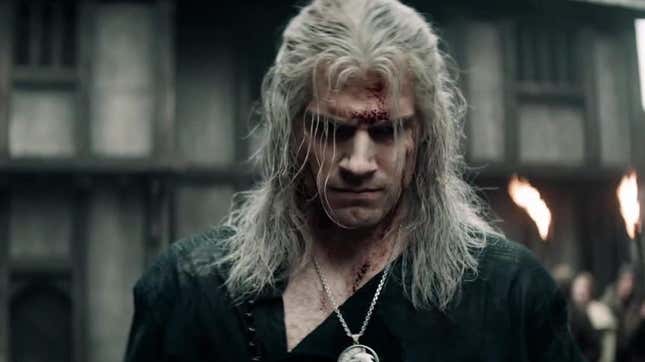Why Is There Always a Dead Girl?
Entertainment

This post contains spoilers for Netflix’s The Witcher.
Halfway through The Witcher’s first season, sorceress Yennefer is on the run from an assassin. She spends half of Episode 4 jumping through portals with Queen Kalis of Lyria and her newborn baby, who Yennefer has been charged with protecting while serving as the advisor to the Aedirnian throne. Early on, the queen establishes herself as extremely unlikeable. Despite Yennefer’s power to physically rend time and space, and her continued efforts to keep the Queen alive, she spits in Yennefer’s face, calls her a stupid bitch, and scolds her for not dodging the assassin more expertly. When the assassin, and its pet monster, finally do show up—again—Yennefer takes the queen’s baby and flees. She fails in the attempt, and the assassin’s blade slices through the newborn child as she jumps through one last portal. He then feeds the queen to his monster, and Yennefer buries the baby in the sand on the shores of a vast, unknown ocean.
There is plenty to like about The Witcher. Henry Cavill looks sexier than ever. Yennefer is also hot, and the outfits she wears for much of the series are both impractical and captivating. There is a fight sequence with a rotting corpse that left me breathless, and a befuddling timeline I was desperate to untangle. Great care was spent on practical effects—something I enjoy immensely. The monsters were ugly, the politics enchanting, and Geralt’s tender relationship with a hapless bard was some of the better physical comedy I’ve seen from Netflix. But underneath all of this was, of course, the countless dead women whose sacrificial demises propelled the plot along.
The Witcher is stuffed with dead things. Monsters hunted by Geralt, men slain by Geralt, elves butchered by Queen Calanthe of Cintra, innocent civilians slaughtered underfoot of the encroaching Nilfaargdian empire, knights and suitors under Yennefer’s spell—both literally, and metaphorically. And then, of course, there’s the dead women. Long have these corpses been used in writing, on the internet, and in the real world, as sacrificial pyres for those seeking enlightenment, wisdom, or even redemption. In The Witcher, they sometimes take the shape of Renfri, whose murder at the hands of Geralt catalyzes a decade (and more) of plot development. As he pulls his sword from her, he learns that sometimes there are no good choices. Renfri still dies, of course, but Geralt gets to learn something meaningful about himself.
-

-

-

-

-

-

-

-

-

-

-

-

-

-

-

-

-

-

-

-

-

-

-

-

-

-

-

-

-

-

-

-

-

-

-

-

-

-

-

-








































